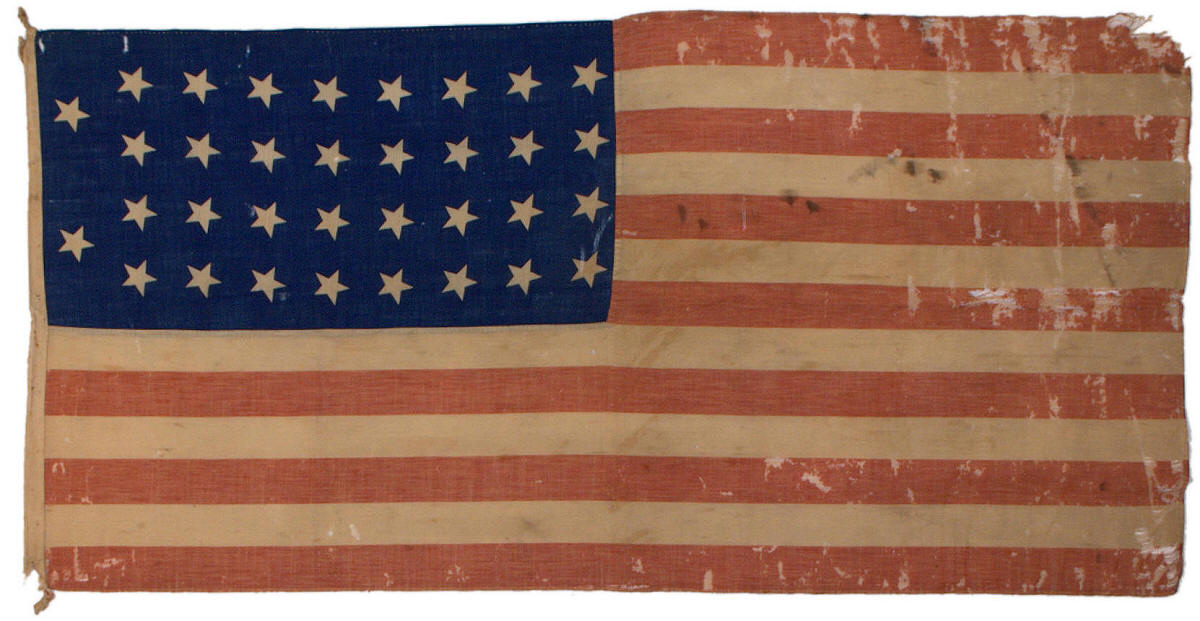|

There exists just a small handful of 34 star flags in
this rare and unusual pattern, with four elongated rows
with two additional outliers. I am aware of just
two or three other flags in this form. The the
outlier stars that sit between the rows form an
elongated "C", which is a trait only seen on flags of 26
stars.
IAS-00158, a printed kerchief showing the Flags of
the World, depicts a 26 star flag in just this form but
with rows of 6 stars rather than 8. Flag expert
and dealer Jeff Bridgman indicates that examples of this
flag may have been used as Union camp colors, which are
the smallest regulation flags used by Union forces
during the Civil War. Camp Colors were often hung
from flags staffs just outside the tents of Union army
officers during the war. This particular flag
originated in Newburgh, Indiana. Newburgh has the
unique distinction of being the first Union town
captured by Confederate forces during the Civil War.
According to the lore of this flag, it was carried by
citizens of Newburgh, riding on horseback, down to the
banks of the Ohio river to see if the Confederates were
actually crossing the river. The party encountered
the Confederate forces and the flag was captured.
The Confederate forces, under the command of Colonel
Adam Rankin Johnson, consisted of a force of just 35
men. Johnson cleverly placed stovepipes and logs
in an arrangement that looked, from afar, to be cannon
trained on Newburgh on the far side of the Ohio River.
On July 18, he and his men crossed the Ohio in boats and
raided the town, capturing it without firing a shot.
Aside from the flag's great rarity of pattern and form,
its association with such a famous incident in the Civil
War makes it a wonderful and historically important
example from the period of the American Civil War.
Additional Reading:
The Newburgh Raid, Wikipedia |

